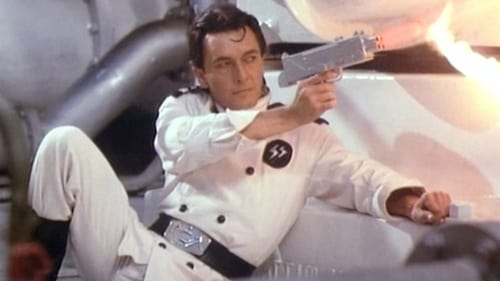
Projection
약자를 괴롭히는 사악한 사회에 희생당하는 병사 보체크가 주인공인 이 오페라는 알반 베르크가 1차 대전 중에 스스로의 체험을 반영해 작곡한 작품이다. 금방이라도 무너질 듯한 계단, 경사로, 버려진 가구들, 쓰레기 더미로 이루어진 무대에 켄트리지의 트레이드마크인 목탄화 애니메이션, 프로젝션, 영화 클립 등으로 거꾸러진 전투기, 서치라이트, 가스마스크, 전쟁터 등의 이미지를 조합한 연출이 대단히 생생하고 인상적이다. 돈 조반니 역으로 유명한 바리톤 페터 마테이가 보체크 역에 처음으로 도전하며, 엘자 반 덴 히버가 보체크의 아내 마리 역을 열연한다. 보체크를 괴롭히는 군악대장 역은 바그너 전문 테너 크리스토퍼 벤트리스가, 희극적인 연기가 탁월한 테너 게르하르트 지겔이 대위 역, 크리스티안 반 호른이 의사 역을 맡았다. 앤드류 스테이플스는 보체크의 동료 안드레스 역으로 메트에 데뷔한다.

Director
South Africa’s wealth and white privilege has been funded by large scale maiming and killing of people by the gold mining industry. Today gold miner communities across Southern Africa have nothing to show for the wealth they produced except extreme rural underdevelopment and the world’s worst epidemic of TB and silicosis. Through testimonies from communities in mining families throughout Southern Africa and extensive use of contrasting archive materials DYING FOR GOLD tells the story of how we have arrived at this extraordinary situation. DYING FOR GOLD brings to the surface the real cost of South

Projection
William Kentridge’s multi-layered production of Berg’s masterpiece stars charismatic soprano Marlis Petersen in the title role—the enigmatic and alluring woman who is equal parts femme fatale, innocent girl, and abused victim. The men around her, whose lives she forever alters, are Johan Reuter as newspaper publisher Dr. Schön; Daniel Brenna as his composer son, Alwa; Paul Groves as the Painter; and Franz Grundheber as Schigolch. Susan Graham sings Countess Geschwitz, and Lothar Koenigs conducts Berg’s landmark score.

Editor
The gangster Manysia is given a second chance after his release from prison. Reverend Jacob Musi takes him under his wings, both as a promise to Manysia’s father and as an act of benevolence. Reverend Jacob thinks that everyone deserves a fresh start and his family generously welcomes Manysia, especially the reverend’s son. But soon the past will cast its shadows over them again.

Editor
Little Bird's first South African production, SOPHIATOWN has won the award for Best Documentary at the Cape Town World Cinema Festival 2003. SOPHIATOWN celebrates the great popular jazz music of the 1950's in South Africa; a rich tradition deserving international attention. Director Pascale Lamche, traces the music, uncovers the artists who created it and the unique culture in which it thrived, concentrated in Sophiatown, Johannesburg's own Harlem, which fuelled by liberation politics until its destruction by the Apartheid regime. The film features Nelson Mandela and such household names from the jazz world as Hugh Masekela, Miriam Makeba, Abdullah Ibrahim, Jonas Gwangwa and Caiphus Semenya.

Editor
Charcoal animation, taken from from Point of View: An Anthology of the Moving Image (2003).

Sound Editor
A journey into the mines provides a visual representation of a journey into the conscience of Kentridge's invented character, Soho Eckstein, the white South African property owner who exploits the resources of land and black human labour which are under his domain. Throughout the film the imagery shifts between the geological landscape underground inhabited by innumerable black miners and Soho's world of white luxury above ground. When Soho, breakfasting in bed, pushes down the plunger of his cafetière, its movement is transformed into a rapid descent through the tray, through the bed and into the mine-shaft. Here the miners' world of overwhelming misery is depicted in claustrophobic tunnels where they are trapped digging, drilling and sleeping, embedded in rock. Above ground, Soho sits at his desk in his customary pin-stripe suit and punches adding machines and cash registers, creating a flow of gold bars, exhausted miners, blasted landscapes and blocks of uniform housing.

Editor
A pilot is the only hope to stop the mutiny of a spacecraft by its security crew, who plot to sell the crew of the ship into slavery.

Editor
William Kentridge (1955) was inspired in this case by the novel by Italo Svevo The Conscience of Zeno (1923). Kentridge concentrates on the main character whose fears and interior torments reflect the social violence and the brutality of the First World War. Through Zeno, the artist explores the development of notions of history and belonging as well as the way in which our identities are defined by social and political changes. Unlike traditional animated cinema based on thousands of drawings, Kentridge composes his work using a small series of drawings which are successively erased, redrawn and photographed throughout the various stages of creation, which he then mixes with paper cut-outs and archive images. This technique, which he has made his own, thus perfectly illustrates the process of memory which erases, alters and gives rise to multiple images.







